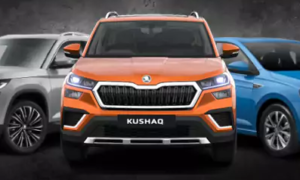While several established automakers now provide at least one electric vehicle (EV) model, Mazda waited until 2022 to introduce the MX-30, its first completely electric vehicle. It’s a pretty little crossover SUV, but the MX-30 needs more than nice looks to make up for its late entrance to the electric vehicle party.

While the Hyundai Ioniq 5, Kia EV6, Chevrolet Bolt EUV, and many others are all strong contenders in the same market sector, the MX-30 sadly falls short in comparison, and Mazda sold just 8 units of the $34,695 EV SUV in July in the United States.
There is little chance that the MX-30 will return for the 2023 model year unless the Japanese automaker significantly reduces the price or increases the vehicle’s range and usability. Plans to release a hybrid MX-30 powered by a rotary engine, however, give the vehicle hope for the future. However, the only option we have at the moment is the all-electric model, so let’s get into the specifics.
Power and range are also issues with the 2022 Mazda MX-30.
The EV Crossover MX-30 is capable of accelerating from 0-60 mph in under 9 seconds because to its front-wheel-drive layout and single electric motor that generates 143 horsepower and 200 pound-feet of torque. Compare these times to those of vehicles like the Hyundai Ioniq 5, which can go from 0 to 60 mph in 4.5 seconds, or the Chevrolet Bolt EUV, which can do the same in 6.8 seconds, and you’ll see that they fall well short of expectations.
However, the Mazda MX-30 is an unexpected exception to the rule, since slow EVs often make up for their lack of acceleration with extensive range and versatility. While most rival models give at least twice as much range, this one can only get you 100 miles on a full charge despite having a battery that’s 30 times as powerful.
Mazda’s electric motor adds poor ‘fuel’ economy, or electric economy in this instance, to the list of problems with the MX-30’s power train. The MX-30’s fuel economy drops to about 76 MPGe at 75 mph, and its combined fuel economy is just around 80 MPGe. While those figures may not seem awful at first glance, they pale in comparison to the 98 combined MPGe return of the Hyundai Ioniq 5 or the 115 MPGe return of the Chevy Bolt EUV.
For its market segment, the 2022 MX-30 is undoubtedly one of the most aesthetically pleasing electric vehicles.
One of the most appealing things about the MX-30 is, well, the MX-30. Mazda’s tiny crossover EV features a beautiful outward design based on clever body shaping and tasteful color combinations that lets it stand out among rivals. It boasts a black sloping coupe-like roof form, while also showcasing sophisticated elements such as a small fake-grill/headlight arrangement with a body-colored panel up front, flared plastic-clad fenders, reverse-hinged back doors, and magnificent 3D taillights in the rear.
The 2022 MX-30’s Interior Is Nice, But Cramped
The MX-30’s comfortable interior has cork and fabric-like upholstery created with plastic from bottles as a homage to the eco-friendliness that electric cars aim to accomplish. The interior’s general arrangement is beautiful with comfortable and roomy seats up front, boasting a sleek 8.8-inch center infotainment screen and a separate temperature control screen in the middle of the center console. Things grow tighter in the back, since the rear seats give limited legroom and headroom, making the MX-30 impractical to accommodate groups of bigger people. It’s the similar story when it comes to cargo capacity; the rear trunk offers just under 11 cubic feet of storage, so you’ll need to fold down the back seats to fit more than a couple of luggage.
To look on the bright side, the MX-30 comes standard with a panoramic sunroof, a computerized driver’s display, and heated front seats, among other goodies. For an additional $3,000, you can upgrade to the Premium Plus trim, which comes standard with a 12-speaker Bose sound system, heated front seats, and active blind-spot assist, among other features.
How to Use an MX-30 in 2022 Well
The MX-30 has terrible acceleration, but its handling qualities make up for it in a big way. The MX-30 is the only vehicle other than Mazda’s MX-5 Miata sports car to feature the “MX” nomenclature in its name, and it lives up to the letters by providing a sharp steering experience in addition to a dynamic and poised chassis, making for an unusually rewarding drive despite being slower than the competition.
Overall, it seems like Mazda’s maiden attempt at a totally electric car was doomed to fail. When there are other rivals on the market with lower starting costs that manage to do the job, there’s no room for cars that can’t give respectable range and efficiency in today’s increasingly competitive EV category. The MX-30’s future is uncertain, but Mazda will need to create a brand-new electric power train if it wants to stay competitive in the long run.
READ MORE- The 2023 Suzuki SV650 will be available in Italy in three different hues. – Top Future Cars



